It is unique in the motor racing world, and in historic racing circles, nothing comes close to the quality and quantity of machinery on track. The brainchild of Patrick Peter (he was the “P” in the BPR series of the 1990s) and the ACO, the 2018 Le Mans Classic is the ninth in this wonderful series. This is our Le Mans Classic racing roundup from the weekend of 6-8 July 2018.
Boasting 500 historic, iconic and rare race cars spread across six ‘grids’ and covering the period 1923 to 1981, there was something that would have appealed to most race goers. This was confirmed by racing legend Derek Bell in a public interview in the Le Mans Village on Friday 6 July, when he said, “If you look around the audience here today, there are people of all ages and generations. I think what we have now is an amazing foundation for the roots, and for the future of the world of motor sport for which we hold the keys.”
In addition to this huge spread of race cars, there were a further 48 entrants in the Group C event, seventy in the Porsche Classic Le Mans race and 62 in the Jaguar Classic race. That’s a total of 680 cars racing in various classes, grids and series over the weekend. In addition to this tally, there were demo laps driven by the newly introduced Global Endurance Legends, which caters for race cars that competed in the 1990/2000s. More than fifty of these GTs and Prototypes took to the track in a series of high speed, non-competitive demo laps for the benefit of the public. A further number of cars celebrating various anniversaries, performed demonstration laps bringing the on-track total to around 800 cars for the weekend.
On track over the weekend were no fewer than 86 Porsches of all descriptions, from the 550 Spyder right through to the all-conquering 962. It is interesting to note that as the grids progressed through the years, the number of Porsche race cars in the later grids increased considerably. For instance, the earliest Porsches that raced in the Classic over this weekend competed in Grid 2 (1949-1956) where there were just seven cars entered. By comparison, in Grid 6 (1972-1981), there were thirty Porsche cars entered. This can be put down to Porsche producing the most potent machinery on the starting grid of any international motor racing event, a trend that started in the late 1950s, and just followed an upward trend through the 1960s, 1970s and 1980s. Porsche was the weapon of choice through those years, if you wanted to win races.
If nothing else, the Le Mans Classic is a public spectacle in which the iconic race cars of yesteryear are put to the test in a competitive environment that more or less replicates the stage on which these cars performed in period. Of course, you cannot perfectly replicate that competitive environment of yesteryear, but the Le Mans Classic comes pretty close. Take the Group C class for instance, it was the Porsche 956 and later the 962 that dominated their class from its inception in 1982 until 1988 when the Jaguar, Mercedes-Benz, Toyota and Nissan rivals took control. The Porsche 962 was still a serious contender, but with more than six years at the top of the class, the 956/962 was past its prime. Make no mistake, the 962 remained competitive until 1994, but the flame was getting dim by the late-80s.
In the Group C race at the Le Mans Classic, the field was spread wide with a Porsche 956 being the oldest in class, with the mighty Jaguar XJR12 and Mercedes-Benz C11 produced in 1990, the youngest. To expect a Porsche 956 to compete against the later Jaguar and Mercedes-Benz was not realistic, but the spectacle created by nearly fifty Group C icons was beyond mere words.
The earliest group of Porsche cars could be found in Grid 2, where the cars raced in period between the years 1949-1956. This is where the diminutive Porsche 356, by comparison with some entrants in this class, earned its competitive stripes in period. The top finishing Porsche in this class was the #30 Porsche 356 Pre-A (1954) which finished in 22nd place against the likes of the Maserati 250S, Jaguar C-type and D-type. Also competing in this class was the 1955 550 Spyder, the forerunner of Porsche’s future race car family.
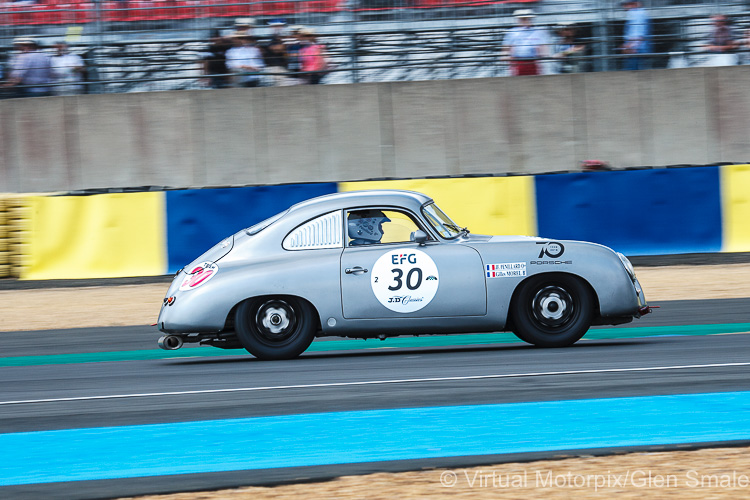
It should be mentioned at this point, that a Le Mans-type start, as used between 1925 and 1969, was used for Grids 1-2-3-4. Flying starts were used for the others Grids. The Le Mans-type start was just for show really, as the drivers ran across the track, jumped into their cars and took off in order of their qualifying times behind a safety car. They drove in an orderly fashion around to the Mulsanne Straight where they were formed up into their grid order, from where they then started the race. The spectacle worked a treat and was loved by the public.
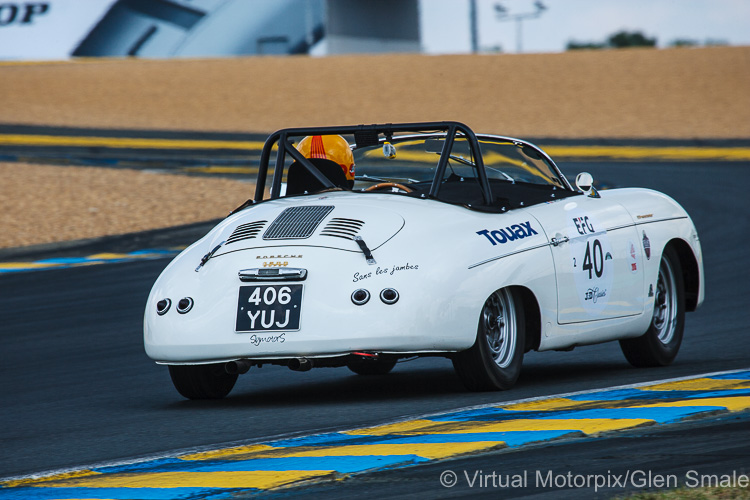
Grid 3 was for cars that competed at Le Mans between the years 1957-1961. This period was at the leading edge of one of the most innovative periods in recent motorsport development. Including such iconic race cars as the Ferrari 250 SWB, arguably one of the most beautiful race cars ever produced, the early 1960s saw great strides being made in lightweight construction and aerodynamics. Powered by a 1587cc 4-cylinder, double overhead cam boxer engine producing 160PS, the Porsche 718 RS60 replaced the earlier 550 model that had served the manufacturer so well. Nicknamed ‘giant killers’, the 550 and 718 race cars repeatedly threatened and even beat much more powerful machinery in its day thanks to Ferry Porsche’s philosophy of lightweight and nimble handling. Against a Lotus XV, Ferrari 250 GT Breadvan, Lister Jaguar, Austin Healey and Aston Martin, the #3 Porsche 718 RS60 came home in ninth place overall.
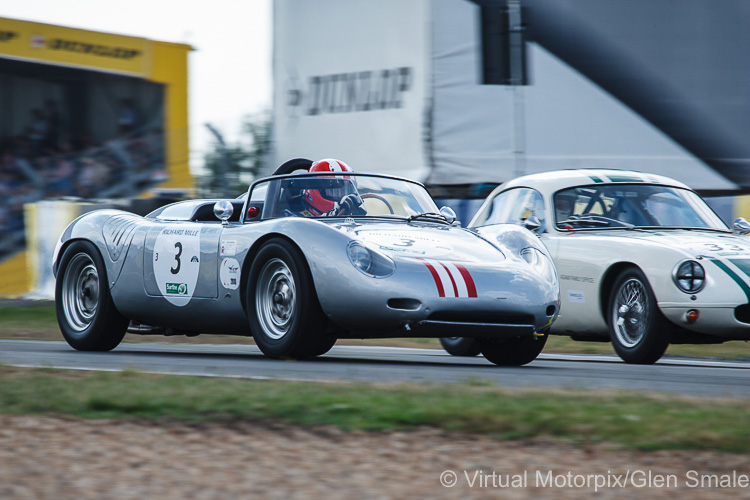
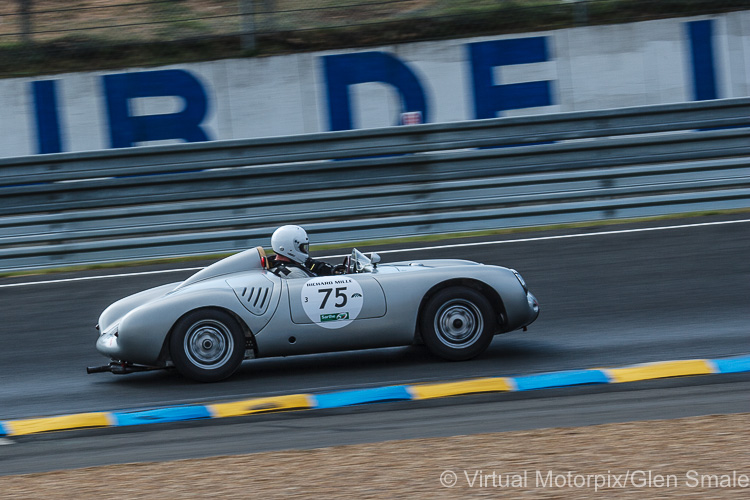
Covering the shortest period, Grid 4 accommodated race cars from between 1962-1965. This period saw Porsche take huge steps forward in the development of both its road and race cars as the 911 was introduced to the public in 1963 and the streamlined 904 broke cover in 1964. The 904 broke with the preferred construction method for Porsche’s racers up to that point, which had followed a space-frame construction with aluminium body panels. The 904 instead was constructed around a strong box-section steel frame with the lightweight fibreglass body panels bonded to the chassis. This new racer was to be powered at launch by the 6-cylinder engine from the 911 but the unit was not sufficiently developed for the rigours of motorsport. The 4-cam, 4-cylinder boxer engine of its predecessor was thus put into service once again, but was now increased to 1966cc. There were no less than four 904s in this class over the Le Mans Classic weekend. Following close on the heels of the 904 was the 906, which did get the 6-cylinder engine at launch, and here we were treated to a pair of 906s in this class. The top-finishing Porsche in Grid 4 was the #42 Carrera 6, or 906 as it was also known, in twelfth place overall.
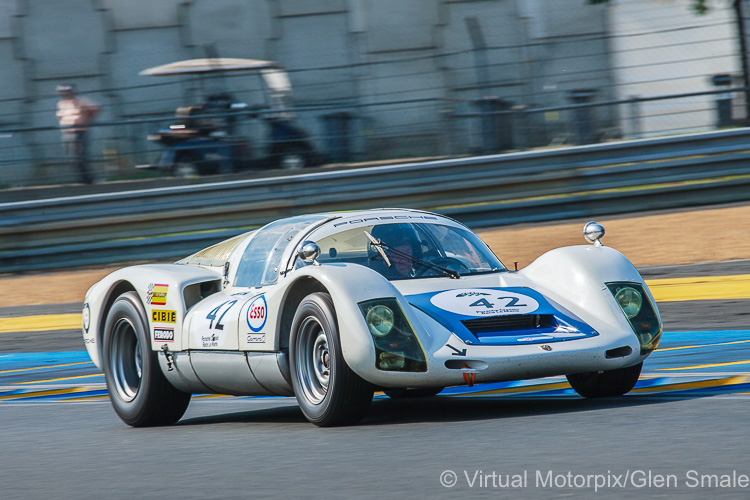
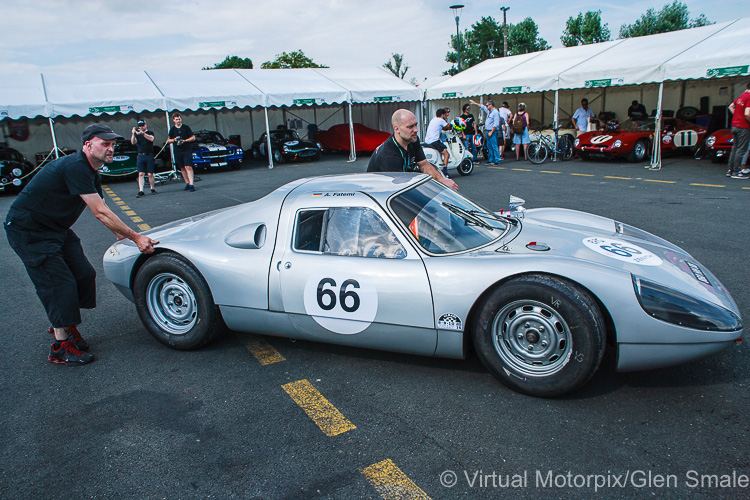
Grid 5 catered for those cars that raced between 1966-1971. This is the period in which Porsche moved into the heavyweight division, as their race car family progressed from the 906 to the 910, the 907, 908 and ultimately the 917. There were seventeen Porsches competing in this Grid, which included two very significant 917s, chassis #002 and #005. Chassis #005 was the car in which John Woolfe was unfortunately killed in 1969 in the Le Mans 24 Hours on the opening lap of the race. This car had been painstakingly restored and looked superb. Lining up alongside was sibling chassis #002, the car used by Rolf Stommelen in practice for the 1969 Le Mans 24 Hour race, and which reached 320km/h down the Mulsanne Straight.
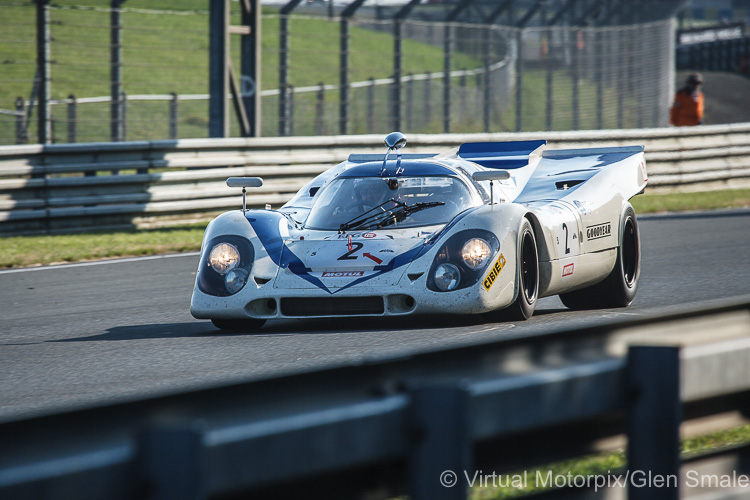
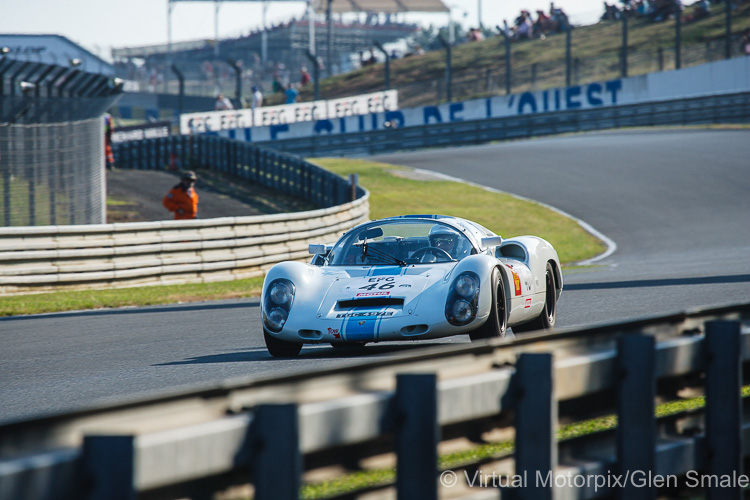
Three superb 910s were on the entry list for Grid 5, as were four 906s, a pair of 908s, four 917s and a host of 911s. The most successful Porsche in this Grid was the #36 Porsche 910, which finished in thirteenth place overall, followed by the #61 906 in 20th place and the #2 917 in 21st place.
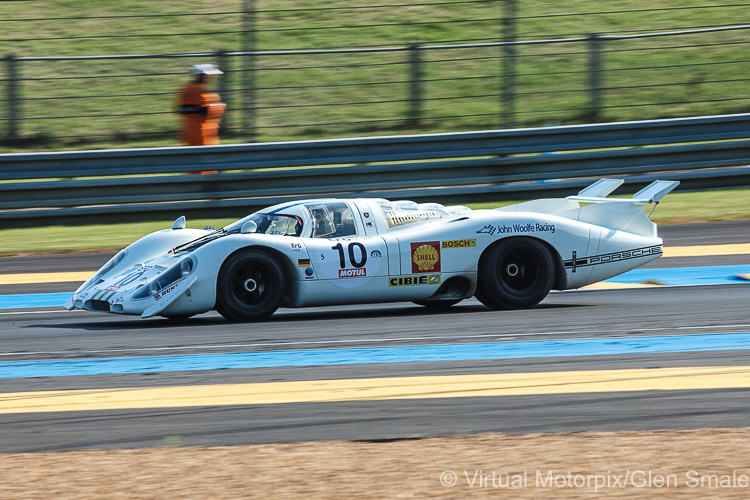
Grid 6 was where the big guns resided. Accommodating race cars produced between 1972-1981, the entry list consisted of no less than 30 Porsches. The 930 Turbo production car was introduced in 1975, and this was accompanied by the 911 Carrera RSR Turbo which led the way on the race tracks. In 1976, the 934 was produced for Group 4 customer teams, while the legendary 935 was produced for the Group 5 class. These two race cars were the cars to have if you wanted to win anything in the 1970s, and in fact it was the Kremer Brothers from Cologne, who would be the first Porsche privateer team to lift the Le Mans 24 Hour trophy. The Kremer Brothers would take the 935 and improve it still further, creating the K2, then the K3 and finally the K4 models.
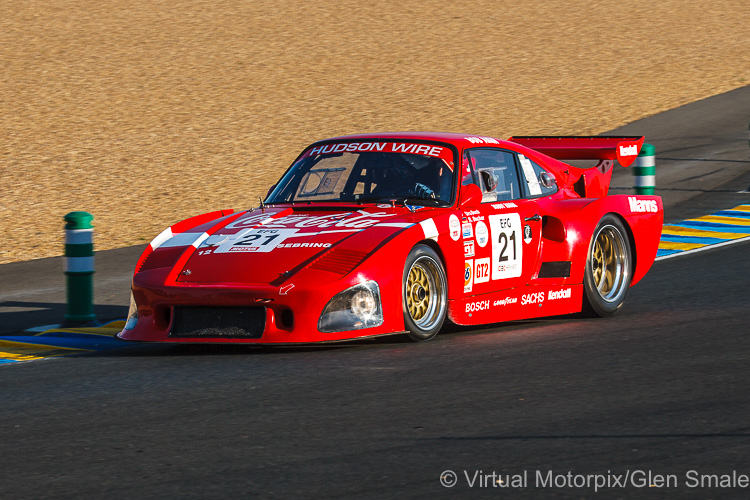
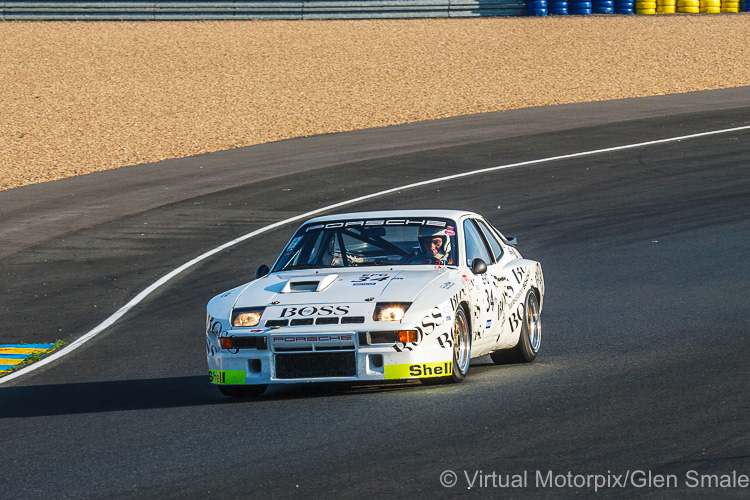
Apart from a pair of 924 GTR racers, the rest of the Porsche entrants in Grid 6 were all 911-based cars, being a mix of Turbo models, 934s and 935s. The fascinating thing about all of the privateer 911-based racers is that despite their similar origins, they all looked so different thanks to the numerous and creative liveries. Easily recognisable because of these lively colour schemes, the cars were often referred to by way of the sponsors’ names. The spectators were treated to some spectacular racing in this class as the #21 Porsche 935 K3 (1980) came home in third place overall, while the #10 935 K3 finished in fifth place. The well-known #67 911 Carrera 3.0 RSR Tebernum Racing car finished in eighth place in the hands of Michael Roock, Uwe Alzen and Claudia Hürtgen.
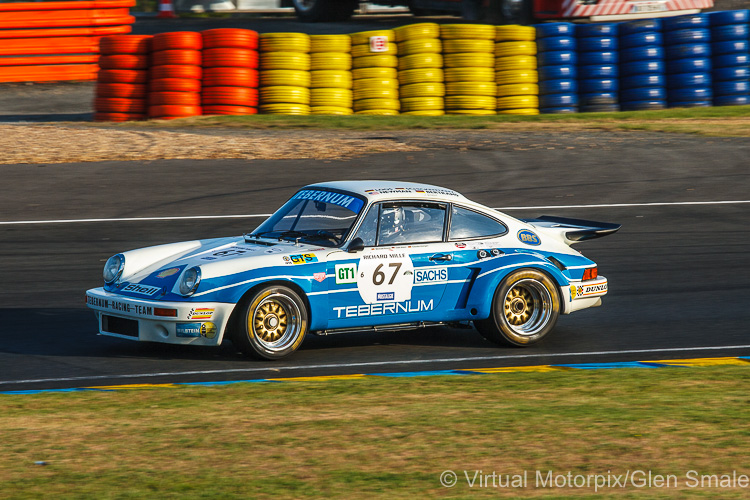
The race organisers claimed an attendance figure of 135,000 over the three days. This record-number of spectators watched more than 800 cars and around 1000 drivers, including ten former winners of the Le Mans 24 Hours, as they plied their trade in glorious sunny weather.
For a further selection of images from this memorable event, visit www.virtualmotorpix.com where you will find images of many other manufacturers, and also well-known personalities.
Written by: Glen Smale
Images by: Virtual Motorpix/Glen Smale


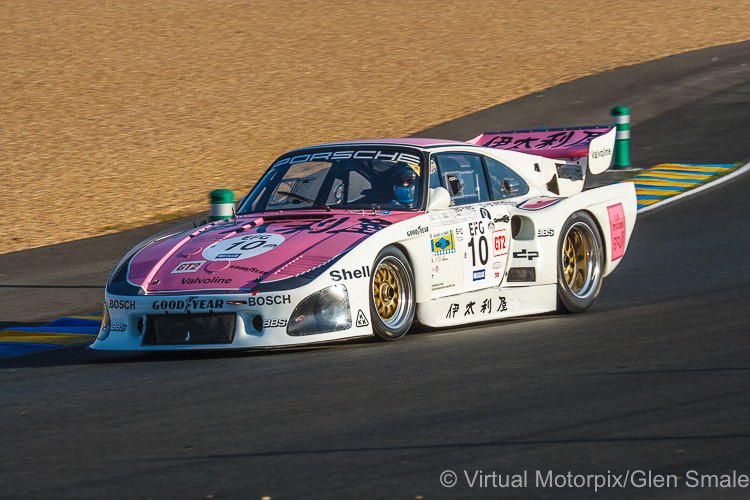

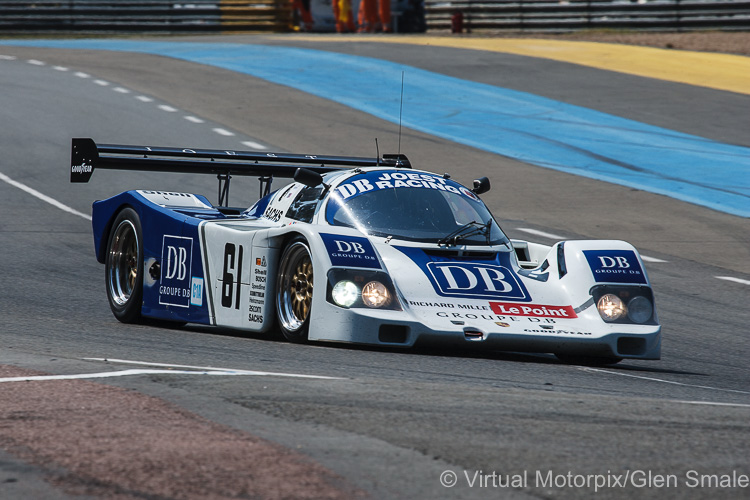
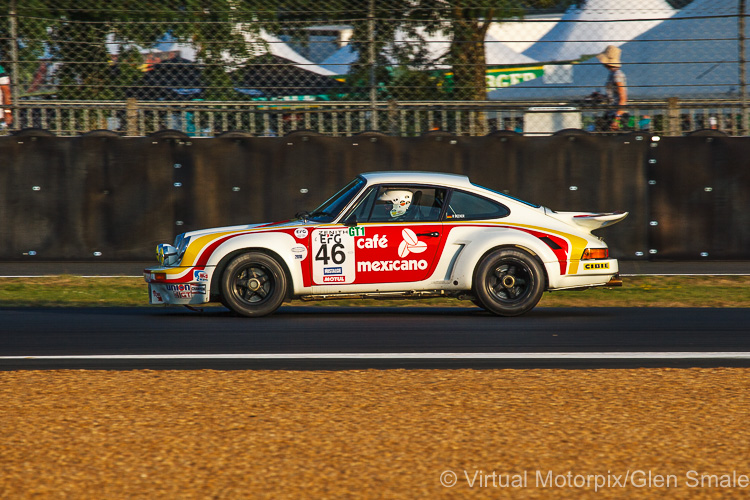
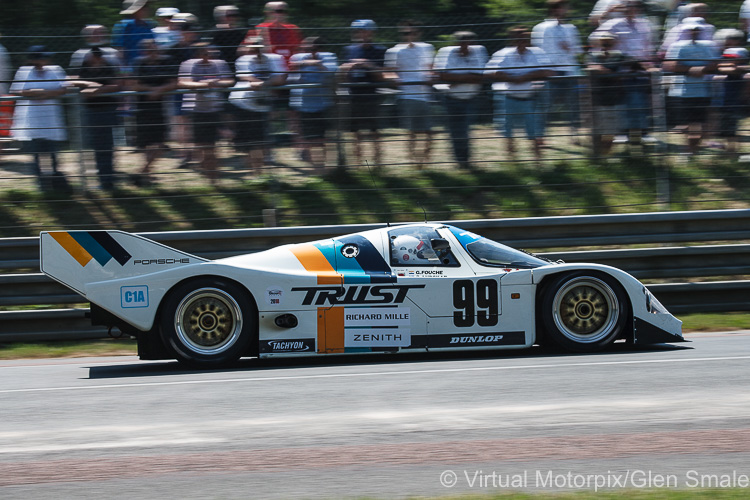
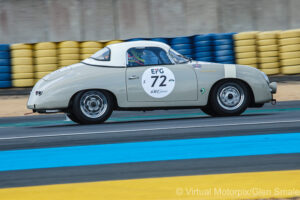
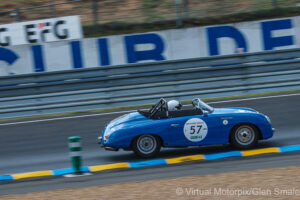
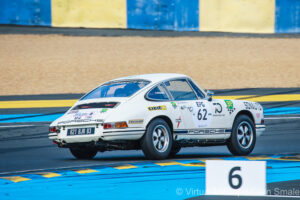
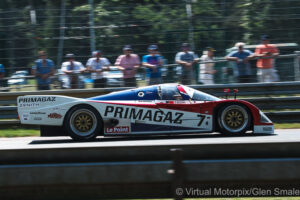
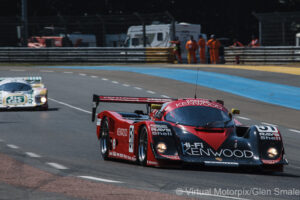
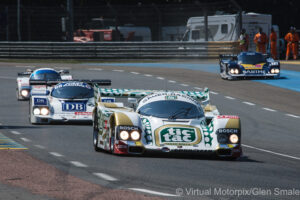
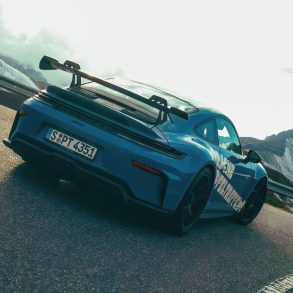
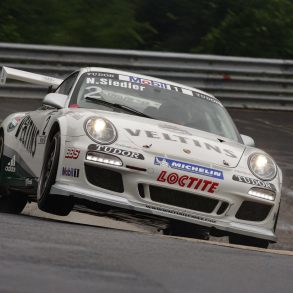
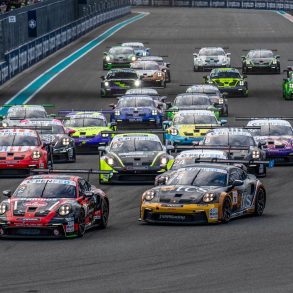
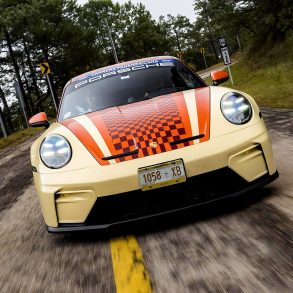
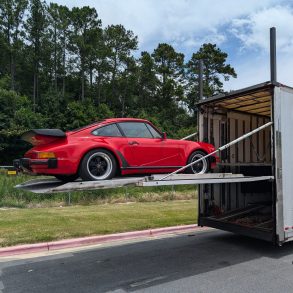
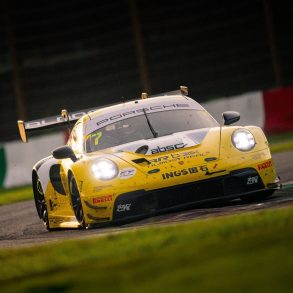
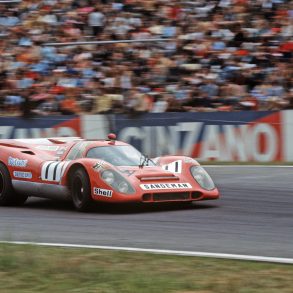
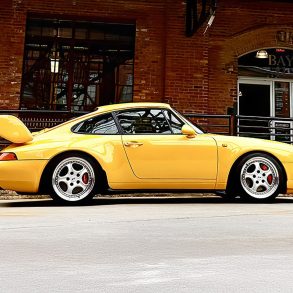

Looks like a great event
0